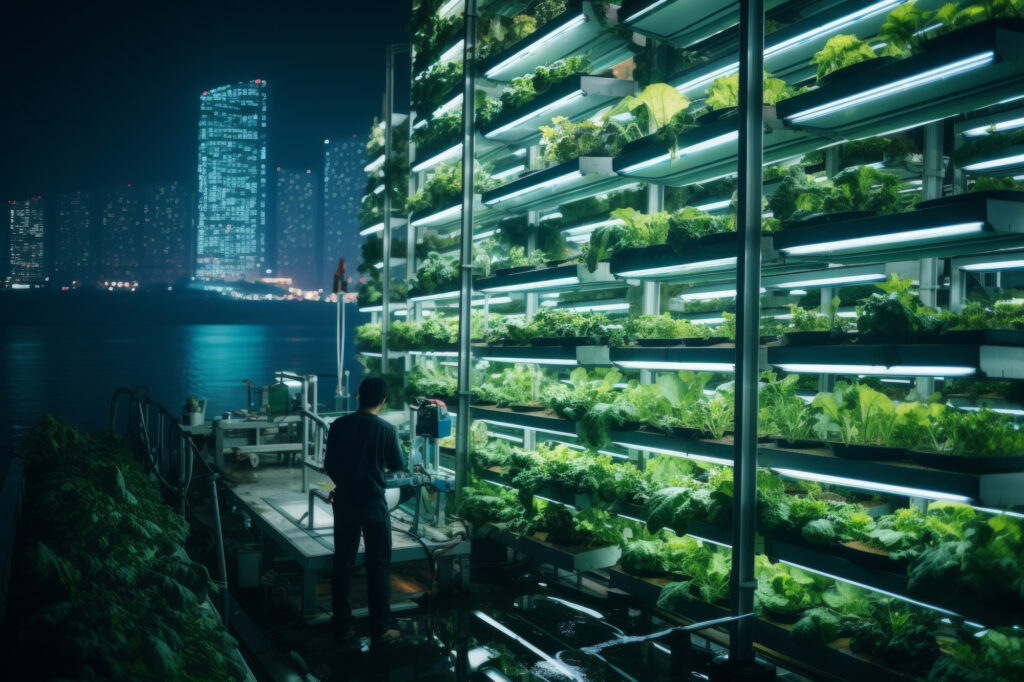For centuries, soil has been the foundation of agriculture. However, with advancements in technology, general hydroponics is reshaping the way plants are cultivated. This innovative method eliminates soil, relying instead on nutrient-rich water solutions to nourish plants directly. As a result, growth rates accelerate, yields improve, and resources are used more efficiently. Whether you dream of a home-based hydroponics garden or a large-scale farming operation, hydroponics offers numerous possibilities. Let’s explore how general hydroponics works, its benefits, and how you can incorporate it into your gardening journey.
What is Hydroponics?

To grasp the concept of hydroponics, it’s essential to begin with the hydroponics definition. Hydroponics refers to a method of growing plants without soil, where the roots absorb nutrients from a water-based solution. Instead of relying on natural soil composition, gardeners and farmers control the nutrient mix, ensuring optimal plant health.
Though hydroponic cultivation has existed for centuries, modern innovations have refined the process, making it more accessible for home gardeners and commercial growers alike. With general hydroponics, plants thrive in carefully regulated environments, free from common soil-related challenges.
The Evolution of Hydroponic Farming
Hydroponics has undergone significant transformations over the years. Early civilizations experimented with soil-free farming methods, such as the Hanging Gardens of Babylon and the floating gardens of the Aztecs. However, it wasn’t until the 20th century that scientists developed structured hydroponic systems that could be used commercially. Today, hydroponic farming is practiced worldwide, offering a sustainable solution to food production challenges.
Modern hydroponic systems now integrate automation, artificial intelligence, and renewable energy sources to optimize efficiency. These innovations allow growers to monitor and control nutrient levels, pH balance, and environmental factors with precision, ensuring consistent plant growth and maximizing yield.
What are the Types of Hydroponics Growing Systems?
Different hydroponics growing systems cater to various needs, ranging from small-scale home setups to industrial farming operations. Choosing the right system depends on your experience level, available space, and resources.
- Deep Water Culture (DWC)
DWC is one of the simplest hydroponic techniques, where plants are suspended in oxygenated nutrient-rich water. With the roots fully submerged, plants absorb nutrients directly, leading to rapid growth. This low-maintenance system is ideal for beginners.
- Nutrient Film Technique (NFT)
NFT involves a continuous flow of nutrient-rich water passing over the roots in a shallow stream. This method is widely used for growing leafy greens and herbs, as it provides consistent nourishment while preventing root drowning.
- Ebb and Flow (Flood and Drain)
In this system, nutrient-rich water periodically floods the root zone before draining back into a reservoir. Mimicking natural watering cycles, this method works well for a variety of plants, including fruits, flowers, and herbs.
- Aeroponics
Aeroponics is a high-tech hydroponic system where plant roots are suspended in the air and misted with a nutrient solution. This advanced technique promotes rapid growth and minimizes water usage, making it one of the most resource-efficient methods.
- Wick System
A passive method, the wick system transports nutrients from a reservoir to the roots using absorbent wicks. Best suited for small-scale gardening, it’s an excellent choice for growing herbs and smaller plants indoors.
How to Create a Hydroponics Garden?

Setting up a hydroponics garden at home requires careful planning and the right materials. First, you need to choose a system that fits your space and needs. If you’re a beginner, Deep Water Culture (DWC) or a wick system is ideal due to its simplicity and low maintenance requirements.
Next, select an appropriate growing medium to support the plants. Common choices include coconut coir, clay pellets, and perlite, all of which help retain moisture while allowing roots to breathe. After setting up the nutrient reservoir, ensure it contains a balanced mix of essential minerals such as nitrogen, phosphorus, and potassium.
Proper aeration is crucial, as oxygen deprivation can cause root rot. Air pumps and air stones help keep the water oxygenated, promoting healthy plant growth. Finally, consider the types of plants you wish to grow. Leafy greens, herbs, and strawberries thrive in hydroponic setups, making them great options for beginners.
Hydroponics Tower: Maximizing Space Efficiency
For those with limited space, a hydroponics tower presents an excellent vertical farming solution. By growing plants in stacked layers, this system maximizes yield while occupying minimal floor space.
A hydroponics tower consists of multiple growing compartments stacked vertically, with nutrient-rich water circulating from the top down. Each plant receives essential nutrients, light, and oxygen, ensuring optimal growth. This system is particularly beneficial for urban environments where space is scarce.
A major advantage of hydroponics towers is their sustainability. They use significantly less water than traditional soil-based gardening while producing faster-growing and healthier plants. The ability to grow fresh produce indoors year-round also makes hydroponics towers an appealing choice for home gardeners and commercial growers alike.
What are the Benefits of General Hydroponics?
The popularity of general hydroponics continues to grow, due to its numerous advantages. The advantages are mentioned below.
Hydroponic farming significantly reduces water consumption compared to traditional agriculture. By circulating nutrient-rich water through closed-loop systems, hydroponics minimizes waste and ensures plants receive a precise amount of nutrients. As a result, hydroponic plants grow up to 50% faster than their soil-grown counterparts, leading to higher yields in shorter timeframes.
Another major benefit is pest control. Since hydroponics eliminates soil, plants are less susceptible to soil-borne diseases and pests, reducing the need for harmful pesticides. This makes hydroponic farming a healthier and more environmentally friendly alternative to conventional agriculture.
Additionally, hydroponic gardens allow for year-round cultivation. Unlike traditional farming, which depends on seasonal conditions, hydroponic setups provide consistent growing environments. With controlled lighting, temperature, and humidity, growers can produce fresh vegetables and herbs regardless of the climate.
How to Overcome Common Hydroponics Challenges?
Despite its benefits, hydroponic farming does have some challenges. One of the primary issues is algae growth, which occurs when light reaches the nutrient solution. To prevent algae buildup, keep reservoirs covered and clean them regularly.
Nutrient imbalances can also be a concern. Since plants rely solely on nutrient solutions, it’s essential to monitor and adjust nutrient levels frequently. Using high-quality hydroponic fertilizers and conducting routine water tests can help maintain balance.
Root rot is another issue that can arise due to overwatering or poor aeration. Ensuring adequate oxygen supply through air pumps and avoiding stagnant water can help prevent this problem. Finally, system failures, such as pump malfunctions or power outages, can be detrimental to plant health. Having backup power sources and regular maintenance routines in place can mitigate these risks.
Conclusion
The rise of general hydroponics marks a significant shift in agricultural practices, providing a soil-free, resource-efficient way to grow plants. Whether you’re an aspiring gardener or an experienced farmer, hydroponic systems like hydroponics gardens and hydroponics towers offer endless possibilities for sustainable cultivation. By choosing the right setup, maintaining proper nutrient balance, and ensuring adequate aeration, you can enjoy fresh, chemical-free produce all year long.
Now is the perfect time to embrace general hydroponics and take a step toward the future of farming!
Learn more about Farming here










